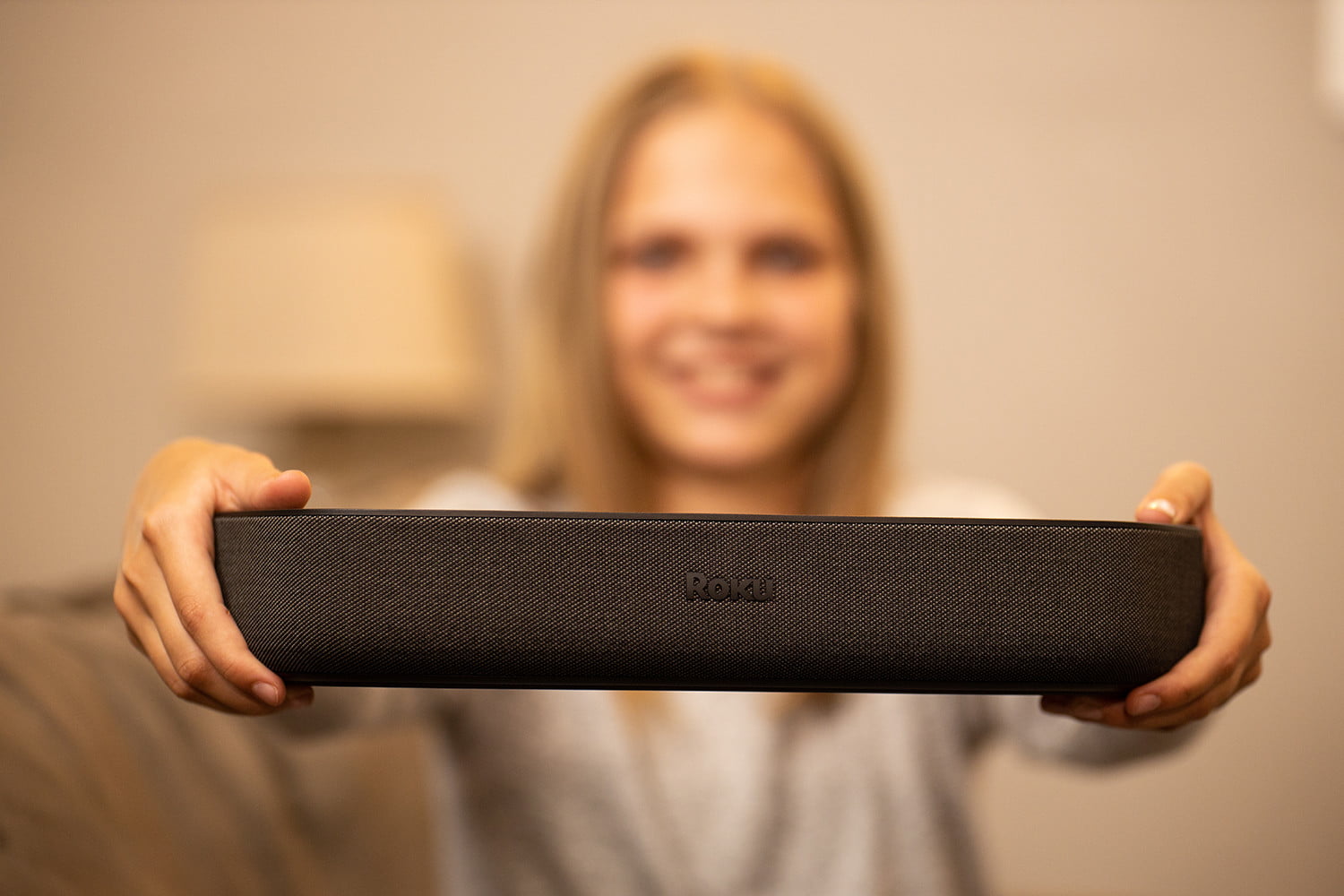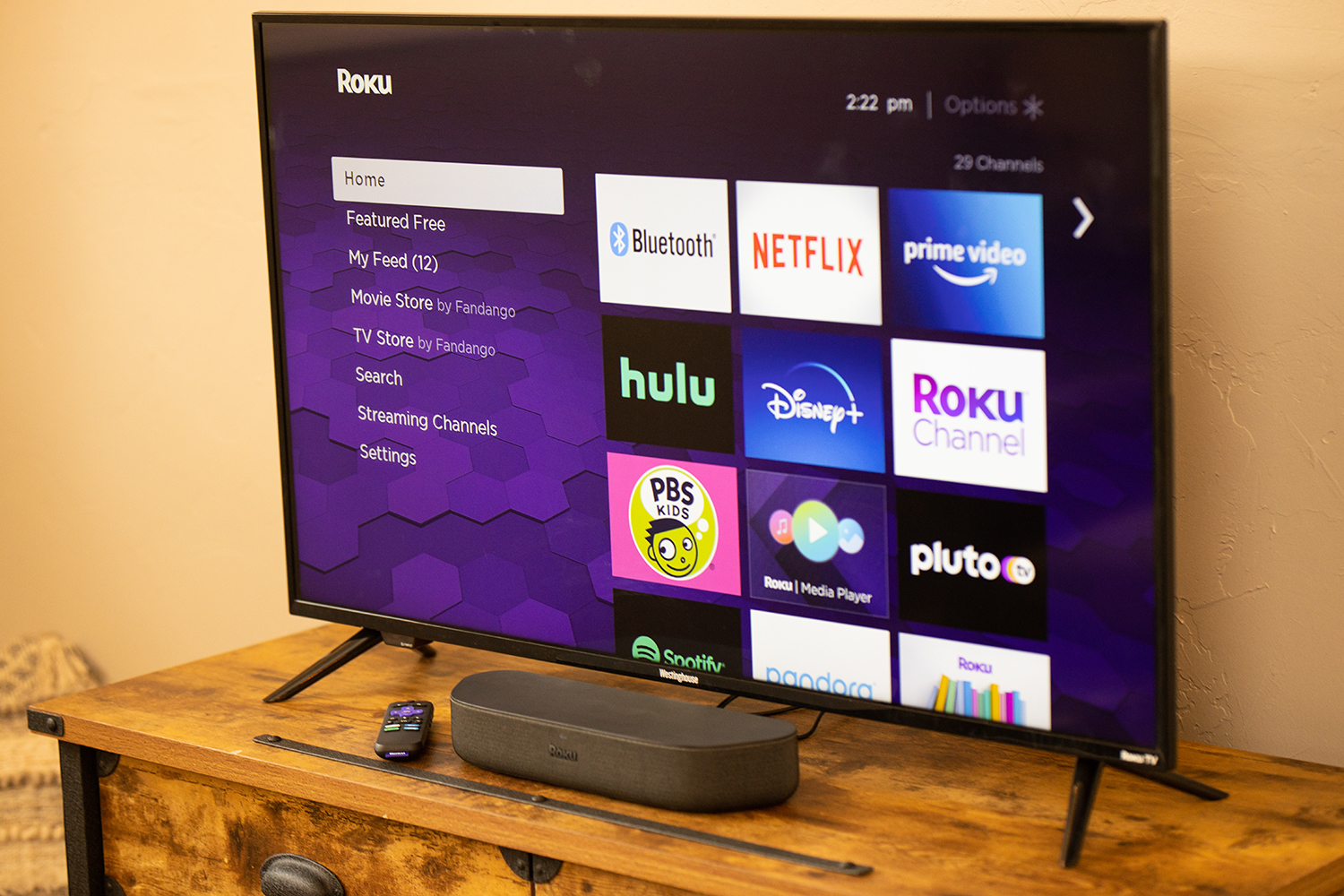Roku is bringing two updates to its hardware lineup for the year with the new Roku Streambar, a compact quad-speaker and player combo that can wirelessly connect with Roku’s existing speakers, and a brand new Roku Ultra, the company’s most powerful streaming hardware device that now supports Dolby Atmos and Dolby Vision.
Additionally, Roku announced Roku OS 9.4 that brings Apple AirPlay 2 support to nearly every Roku 4K player on the market.
Here is everything you need to know about Roku’s 2020 announcements.
Roku Streambar
Roku is expanding its lineup of audio products that are also streaming players with its latest 2-in-1 Streambar. At 14 inches wide by 2.4 inches tall, it’s significantly smaller than Roku’s Smart Soundbar but has the same 4K HDR and Dolby audio streaming capability. While it doesn’t support Dolby Atmos or Dolby Vision — you’ll have to own the new Roku Ultra to get that — it should be powerful enough for many general consumers just looking for a fast and easy way to get better sound out of their TV while also gaining access to the popular Roku streaming experience.

The Streambar features four speakers: Two forward-facing, and two side-facing. The two forward-facing drivers are focused on delivering high-quality dialogue, and Roku says they will enhance both volume and clarity. The side speakers are angled outwards and are designed to fill a room with sound. The result is unlikely to be quite surround sound but should make the little bar sound a lot larger than it is.
In addition to the single HDMI Arc and Optical port, the Streambar is also compatible with Bluetooth and Spotify Connect, and Roku claims that “intricate depth” is noticeable in music.
The Streambar is compatible with the Roku Wireless Subwoofer and Roku Wireless Speakers, and all can be connected to create a full surround sound experience.
Roku also outfitted the Streambar with their signal processing that is designed to quiet loud commercials, boost the volume of voices, and optimize sound for night listening. Each of these options can be accessed by different, easily accessible volume modes.
The Roku Streambar will be available in mid-October for $130.
Roku Ultra (2020)
The Roku Ultra is getting what has thus far been missing from all the company’s players other than Roku TVs: Support for Dolby Vision and Dolby Atmos. Now the Roku Ultra can deliver the sought-after picture quality of Dolby Vision content to any TV that supports the format. Additionally, the Roku Ultra can provide Dolby Atmos audio to Dolby Atmos capable soundbars, speakers, or A/V receivers for an immersive sound experience. Roku also added future-proofing support for the AV1 codec, a video codec that is becoming popular with streaming services as a way to improve streaming picture quality.

Roku also updated the processor with more memory, allowing channels to launch quicker and videos to start faster. They also improved the Wi-Fi reception on the Roku Ultra to have 50% more wireless range (it still also has an Ethernet port). The USB port has been upgraded to USB 3.0, and Roku also added Bluetooth support.
In short, the Roku Ultra (2020) will support more formats, have more and better connection options, and will have a faster operating system.
The Roku Ultra (2020) will be available mid-October for $100.
Roku OS 9.4
Roku OS 9.4 adds a few performance enhancements and customization options. Namely, all 4K Roku players (except the Roku 4) will get Apple AirPlay 2 and HomeKit support.
If you have a Roku audio product, the update will allow multichannel speaker configuration, which means you can adjust the volume of the rear surround speakers relative to the volume of the soundbar to your own personal preference.
Roku is also adding a Live TV channel guide that will allow access directly from the home screen. The update also brings performance enhancements that include faster initial setup and faster response time in navigation/launching content, and a set of updated Theme Packs to customize home screens and screen savers (with new tones when using the various buttons on a Roku remote, too).
The update will first hit Roku devices, including the Roku Ultra (2020) and the Streambar, in the coming weeks before rolling out to Roku TVs in the next few months.
Looking for more? Check out this awesome collection of the best Black Friday Roku deals we found.





